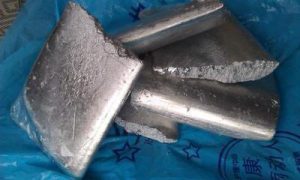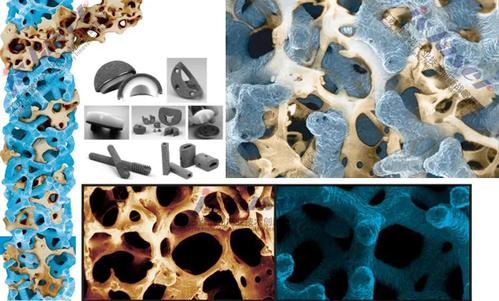Preparation methods of tantalum
Smelting method: Tantalum and niobium ore is often accompanied by a variety of metals, and the main steps of tantalum smelting are decomposition of the concentrate, purification, and separation of tantalum and niobium to produce pure compounds of tantalum and niobium, and finally the metal.

Ore decomposition can be used hydrofluoric acid decomposition method, sodium hydroxide melting method and chlorination method, etc. Separation of tantalum and niobium can use a solvent extraction method, step-by-step crystallization method, and ion exchange method.
Separation: Firstly, the tantalum-niobium iron ore concentrate is decomposed with hydrofluoric acid and sulfuric acid tantalum and niobium are dissolved in the leaching solution as fluorotantalic acid and fluoronobotic acid, while the associated elements such as iron, manganese, titanium, tungsten, and silicon are also dissolved in the leaching solution, forming a strongly acidic solution with a very complex composition.
The tantalum-niobium leach solution is extracted with methyl isobutyl ketone and extracted into the organic phase at the same time, and the organic phase is washed with a sulfuric acid solution to obtain the pure organic phase containing tantalum-niobium and the extracted residue combined, which contains trace tantalum-niobium and impurity elements, and is a strongly acidic solution, which can be recovered comprehensively.
The pure organic phase containing tantalum-niobium is back-extracted with a dilute sulfuric acid solution to obtain the organic phase containing tantalum. Niobium and a small amount of tantalum enter the aqueous phase and then the tantalum is extracted with methyl isobutyl ketone to obtain a pure niobium-containing solution.
The pure organic phase containing tantalum is then back-extracted with water to obtain a pure tantalum-containing solution. The organic phase after the reverse tantalum extraction is returned to the extraction cycle.
Pure tantalum fluoride solution or pure niobium fluoride solution reacts with potassium fluoride or potassium chloride to form potassium tantalum fluoride (K₂TaF₇) and potassium niobium fluoride (K₂NbF₇) crystals, respectively, and can also react with ammonium hydroxide to form tantalum hydroxide or niobium hydroxide precipitates. Tantalum or niobium hydroxide is calcined at 900~1000°C to produce tantalum or niobium oxide.
Preparation of tantalum.
①Tantalum metal powder can be produced by the thermal reduction of metal (sodium thermal reduction) method. The reduction of potassium fluorotantalate with sodium metal in an inert atmosphere: K2TaF7+5Na─→Ta+5NaF+2KF. The reaction is carried out in a stainless steel tank, and the reduction reaction is rapidly completed when the temperature is heated to 900℃. The tantalum powder made by this method is irregular in particle shape and fine in size, which is suitable for making tantalum capacitors.
Tantalum metal powder can also be made by electrolysis of molten salt: using the molten salt of potassium fluorotantalate, potassium fluoride, and potassium chloride mixture as the electrolyte to dissolve tantalum pentoxide (Ta2O5) in it, and electrolysis at 750℃, tantalum powder with a purity of 99.8~99.9% can be obtained.
②Tantalum metal can also be obtained by reducing Ta2O5 with carbon heat. Reduction is generally carried out in two steps: first, a certain ratio of Ta2O5 and carbon mixture in a hydrogen atmosphere at 1800 ~ 2000 ℃ to make tantalum carbide (TaC), and then TaC and Ta2O5 in a certain ratio of the mixture of vacuum reduction into tantalum metal.
Tantalum metal can also be produced by thermal decomposition or hydrogen reduction of tantalum chloride. Dense tantalum metal can be prepared by vacuum arc, electron beam, plasma beam melting, or powder metallurgy. High-purity tantalum single crystals are produced by crucible-free electron-beam regional melting.
